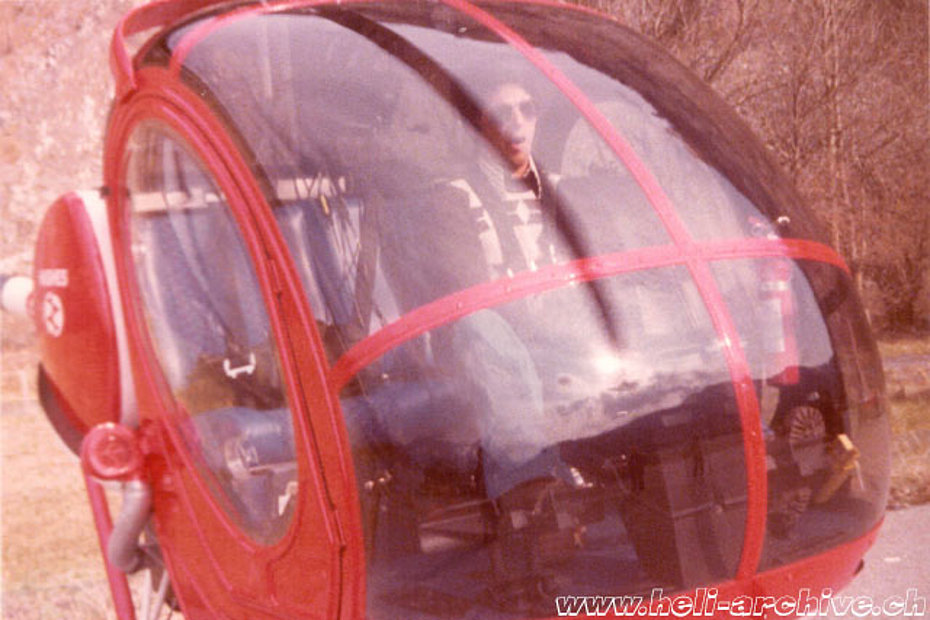
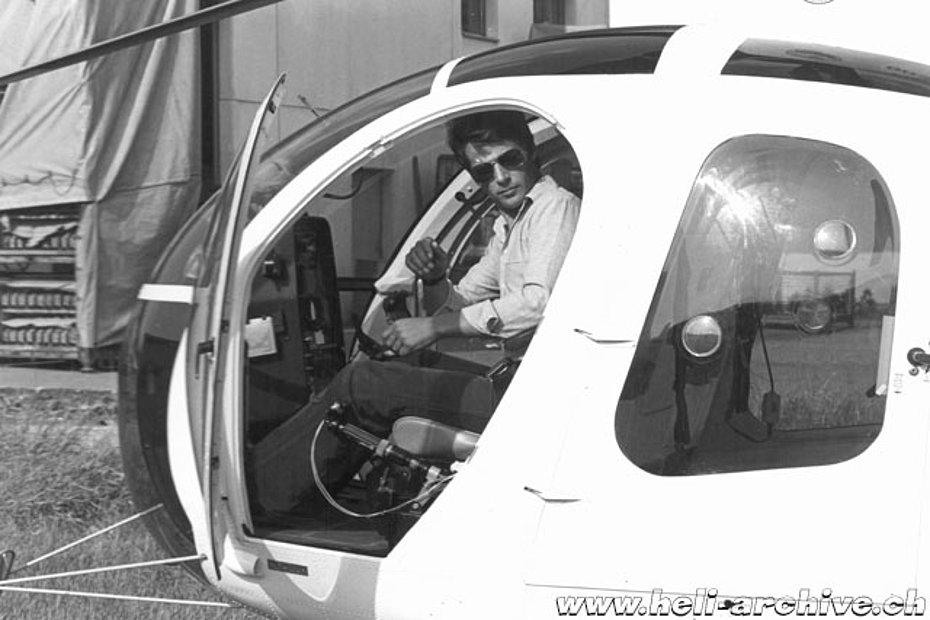
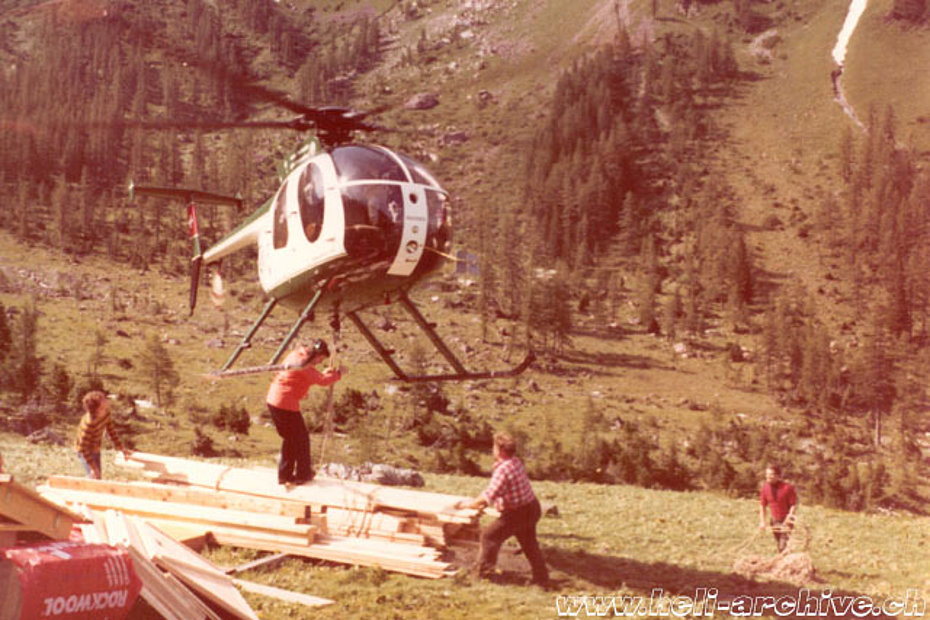
Vogt David
Born on August 30, 1948 in the Principality of Liechtenstein, David Vogt was the first Liechtensteinian to obtain a helicopter pilot licence. His great determination allowed him to overcome the mistrust of his fellow citizens and realize his dream of creating a helicopter base in Balzers. In 1983 he founded the helicopter company Rhein-Helikopter AG. Struck down by an incurable disease, he died on July 17, 2022 at the age of 73. Below briefly summarized his story and that of the heliport to which he dedicated his whole life.
David Vogt, the second of six children of David Sr. and Idele Vogt-Wolfinger after compulsory schooling followed an apprenticeship as a bricklayer and later became a master builder. His father owned a construction company, but David Jr. didn't particularly like the job. What fascinated him were the helicopters that were occasionally employed to supply construction materials to mountain construction sites.
Already as a boy the world of aviation had captured his interest and so he had approached aeromodelling.
In 1978 he decided to make a change in his life and launch himself into a new sector, that of air transport. On April 3, 1978 he made his first training flight at Heliswiss in Belp/BE, but it was at Fuchs Helikopter in Schindellegi/SZ that he did most of the training. On October 3, 1978 FOCA issued him the professional helicopter pilot license No. 260.
From that moment on, he began to carry out the first commercial flights at the controls of the Hughes 500D series helicopters.
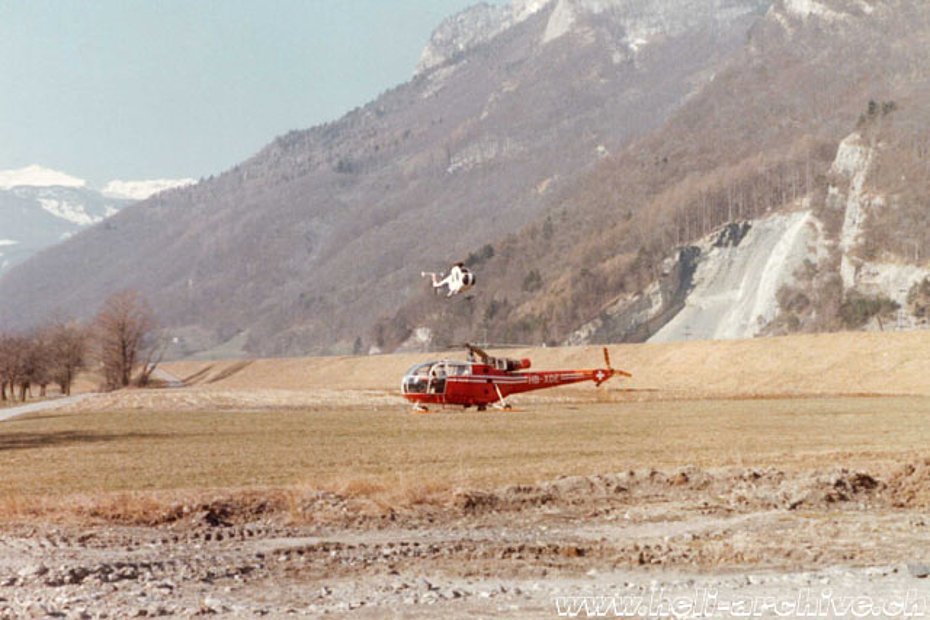
Balzers Heliport
In 1978 David Vogt had the idea of using an area of 2’275 square meters, owned by the Municipality of Balzers along the submersible river bank located in the locality known as "Schefflände", to create a landing place for helicopters in Liechtenstein. He therefore asked the municipal authority for a permit to that effect, which was granted on August 17, 1978 on a provisional basis for an initial period of one year.
On October 5, the Liechtenstein Society for Environmental Protection wrote a letter of complaint to the Government of the Principality raising a series of objections, mainly of an environmental nature.
Landings and takeoffs took place, we can imagine, irregularly. Especially during the winter 1978-1979 the air activity was somewhat reduced, more intense instead during the following spring and summer.
On April 24, 1979, David Vogt presented to the Balzers Town Hall the project for the creation of a small helipad.
On this regard official measurements of the noise produced by a Hughes 500D were made by the FOCA on April 9, 1979.
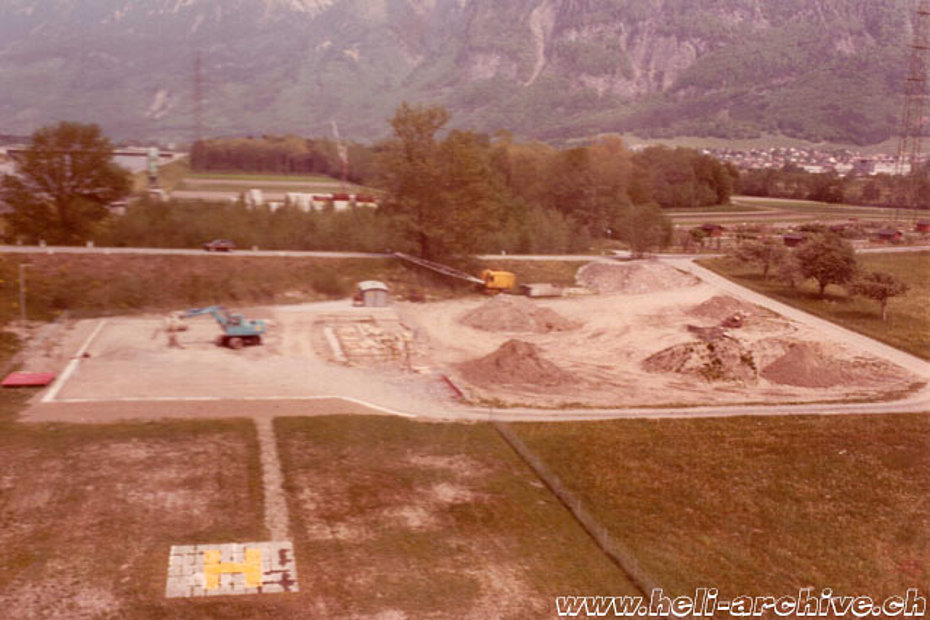
Again alarmed by David Vogt's intentions, the Liechtenstein Society for Environmental Protection and the Liechtenstein Alpine Club wrote to the authorities to try to nip the entrepreneurial initiative in the bud. According to them, helicopters, in addition to generating noise, would have polluted air quality. Another argument concerned the fact that in the area there were already various unresolved problems such as those related to the shooting exercises of the Swiss armed forces at the parade ground on the St. Luziensteig or again, on the subject of aviation, the disturbance created by the activity of airplanes on the small airport of Bad Ragaz especially on Saturday and Sunday, and also RC-model aircraft.
On September 27, 1979 , the Balzers City Council accepted a new request by David Vogt to conclude a new contract for a period of 10 years, which included the rights to build. The resolution of the City Council was published in the Municipal Register on October 5, 1979.
Against this decision on October 16, 1979, a complaint signed by 9 citizens was filed for violation of constitutionally guaranteed rights. On October 18, 1979, a second complaint was lodged with more or less similar arguments.
At its meeting on October 30, 1979 the Government decided to ask the Liechtenstein State Court to issue an advisory opinion on the various questions raised in the complaints.
By letter dated November 26, 1979, the President of the Principality of Liechtenstein informed the Court of State, which would rule on the matter at its meeting of December 11, 1979.
However, it was still some time before David Vogt knew the outcome of his request. Meanwhile, on September 29, 1981, the newspaper Lichtensteiner Volksblatt reported that a landing platform for rescue helicopters had been prepared on the roof of the Vaduz hospital.
Voting for the heliport
The idea of creating a small heliport with hangar, workshop and offices was also vigorously opposed by a part of the population of Balzers and Trübbach. Those who lived not far from the chosen site feared above all for the noise disturbance generated by the movements of helicopters.
The discussion around the creation of the heliport also divided the political forces. One of the arguments raised by opponents was, for example, the fear that the base would be used by rich people for their private flights.
On the part of the economic circles, however, there was solid support and an entrepreneurial vision. A helicopter base would create new jobs and contribute to the development of the local economy.
The process for obtaining the building permit was long and articulated and forced David Vogt to arm himself with a lot of patience. In fact, it took two and a half years and a municipal vote before he saw the green light. In March 1982, the 634 citizens of Balzers with voting rights were invited to vote on the heliport project: of the 509 voters, 287 expressed their opinion in favour (57%).
At the end of this first decisive phase, a 30-years contract was finally signed for the use of the grounds.
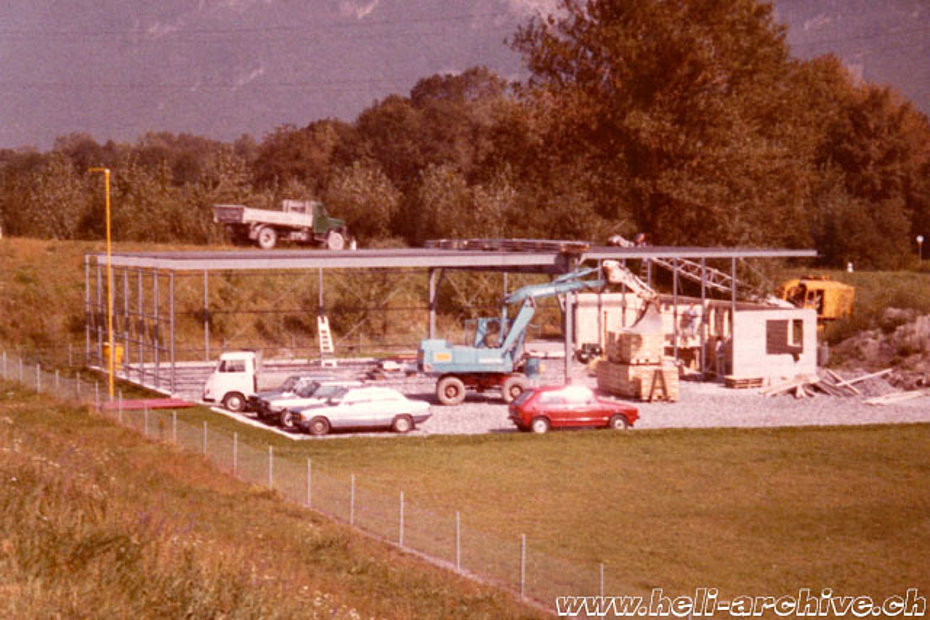
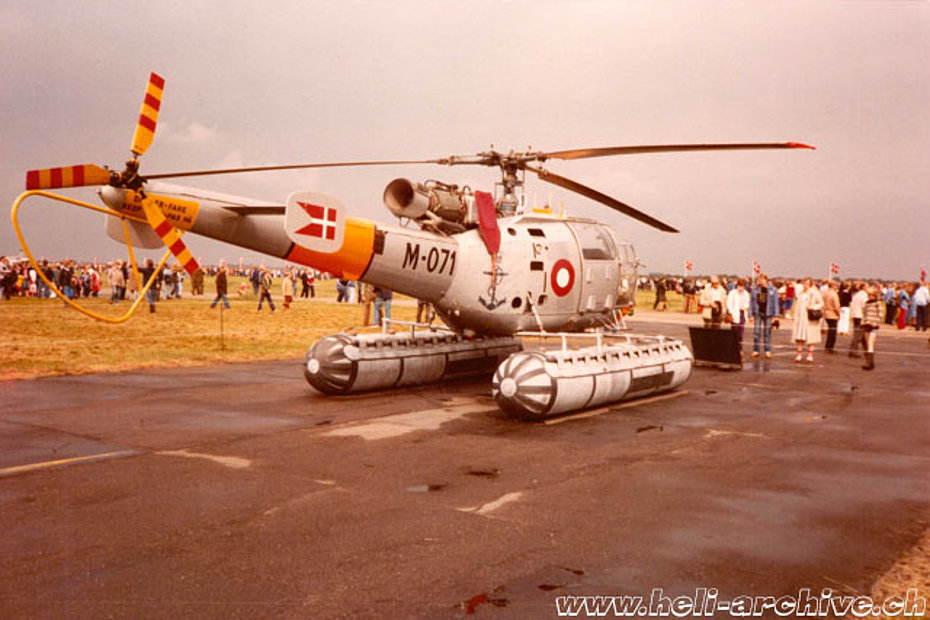
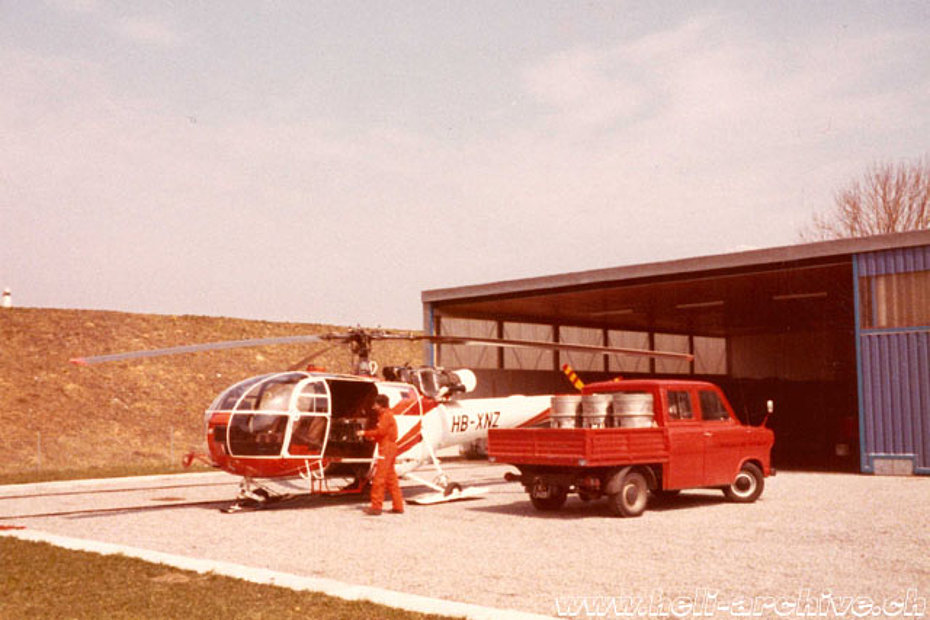
The controversy continued for some time and was at the center of lively discussions. Not infrequently "readers' letters" were published in various newspapers in support of the heliport or against it.
The first helicopter arrives
Finally obtaining the building permit from the municipal authority, David Vogt on May 19, 1983 together with Kurt J. Jäger (an aviation mechanic with the qualification of aircraft pilot who initially held the role of director of flight operations and chief technician from which David Vogt later separated) decided to found Rhein-Helikopter AG (Rhein is the famous river that originates in Switzerland and laps the entire western border of the Principality of Liechtenstein.
Leafing through the correspondence of the time, it emerged that the company was initially to be called Heli-Alpina AG.
With an investment of around CHF 500,000, a second-hand SE 3160 Alouette 3 that had previously been used by the Danish army was purchased.
The helicopter was registered in the Swiss aircraft register on July 12, 1983 and received the call-sign HB-XNZ.
In the absence of a technical service, its maintenance was initially entrusted to the mechanics of Heliswiss in Belp/BE.
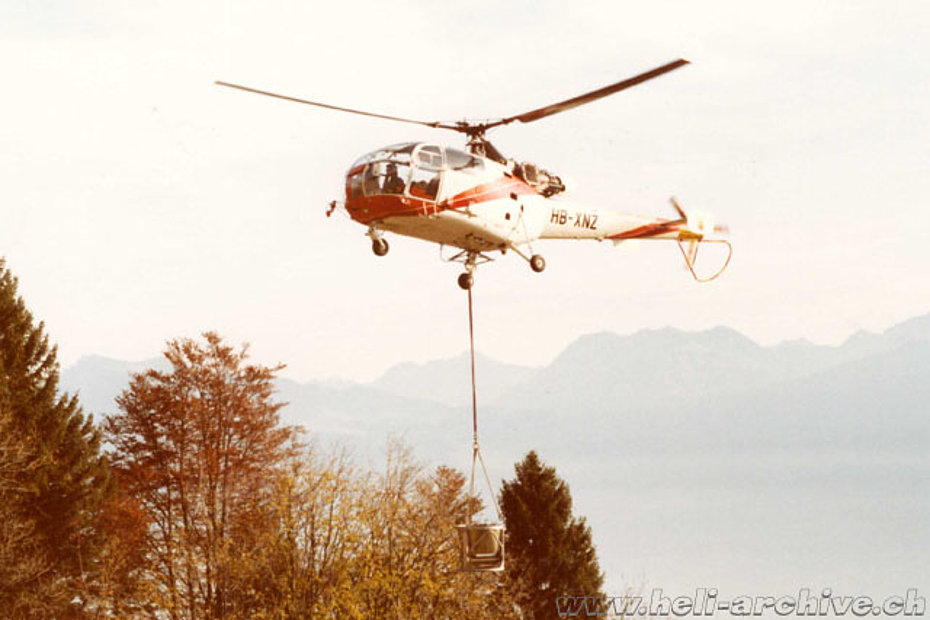
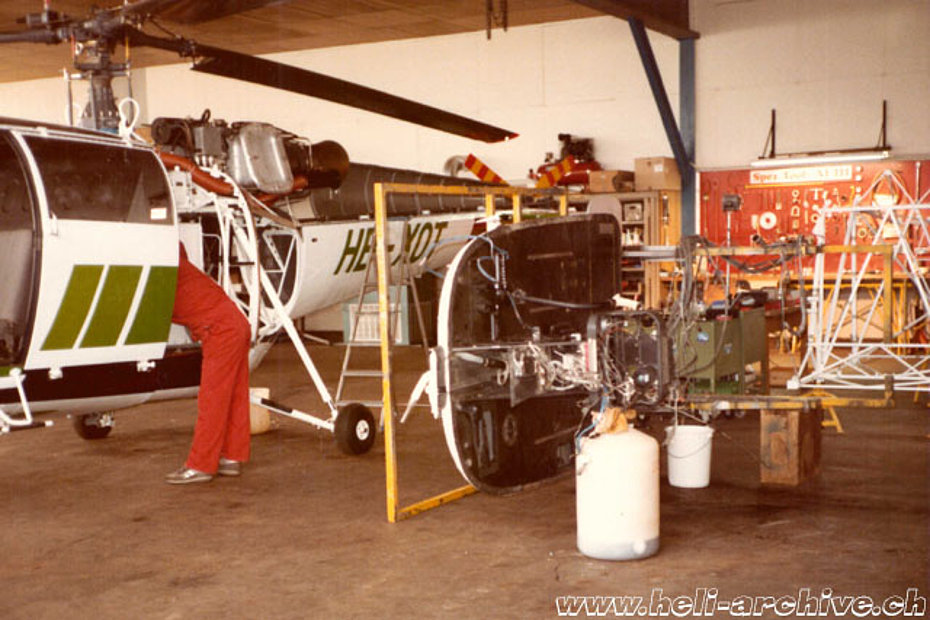
Piloted by David Vogt the helicopter immediately began to render valuable services in the region. Among its most frequent uses were the supply of mountain construction sites, mountain pastures and alpine huts, logging operations, transport of material of all kinds and to combat forest fires.
In the winter months between 1983-1984 a modern workshop was organized to allow mechanics Bernhard "Benno" Tschachtli and Köbi Kellenberger to carry out maintenance and overhaul work on the helicopters.
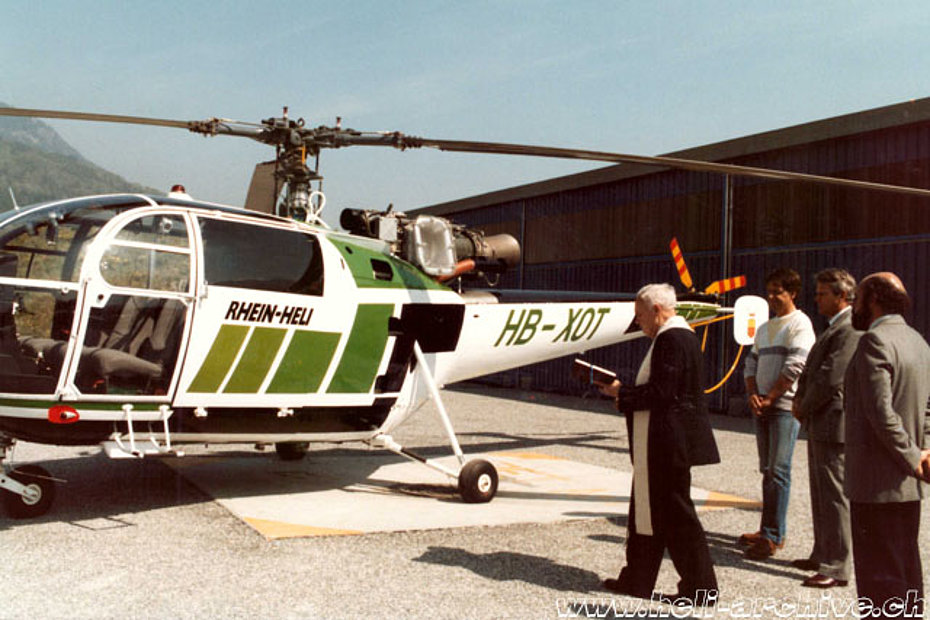
In March 1984 the newly founded company bought in Germany its second Alouette 3, which after being imported underwent a complete overhaul involving about 2,000 hours men work. On May 7, 1985, the SA 316B Alouette 3 received the Swiss call-sign HB-XOT.
On May 18, 1985, with its official entry into service, it was blessed at a ceremony by the chaplain of Triesenberg.
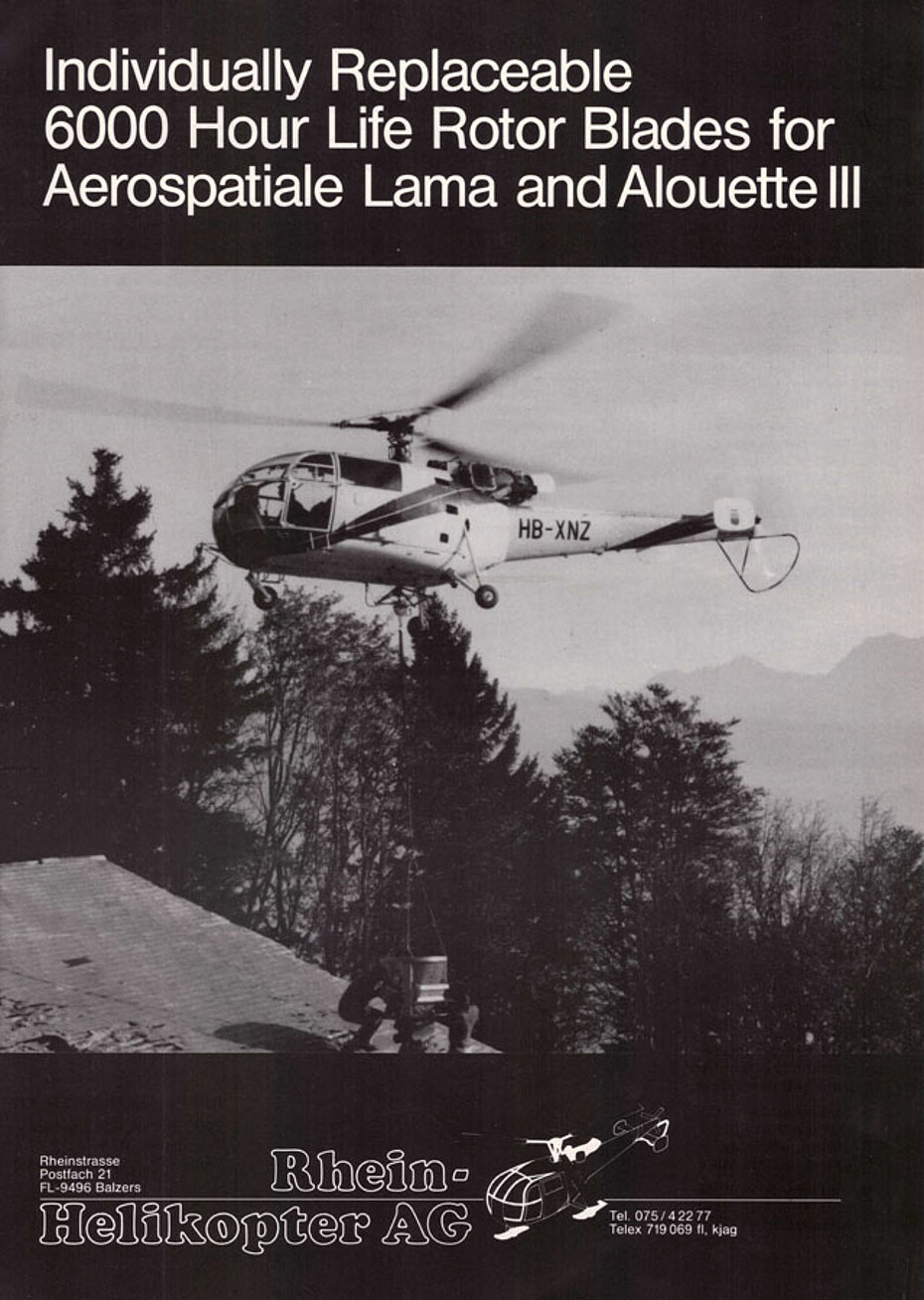
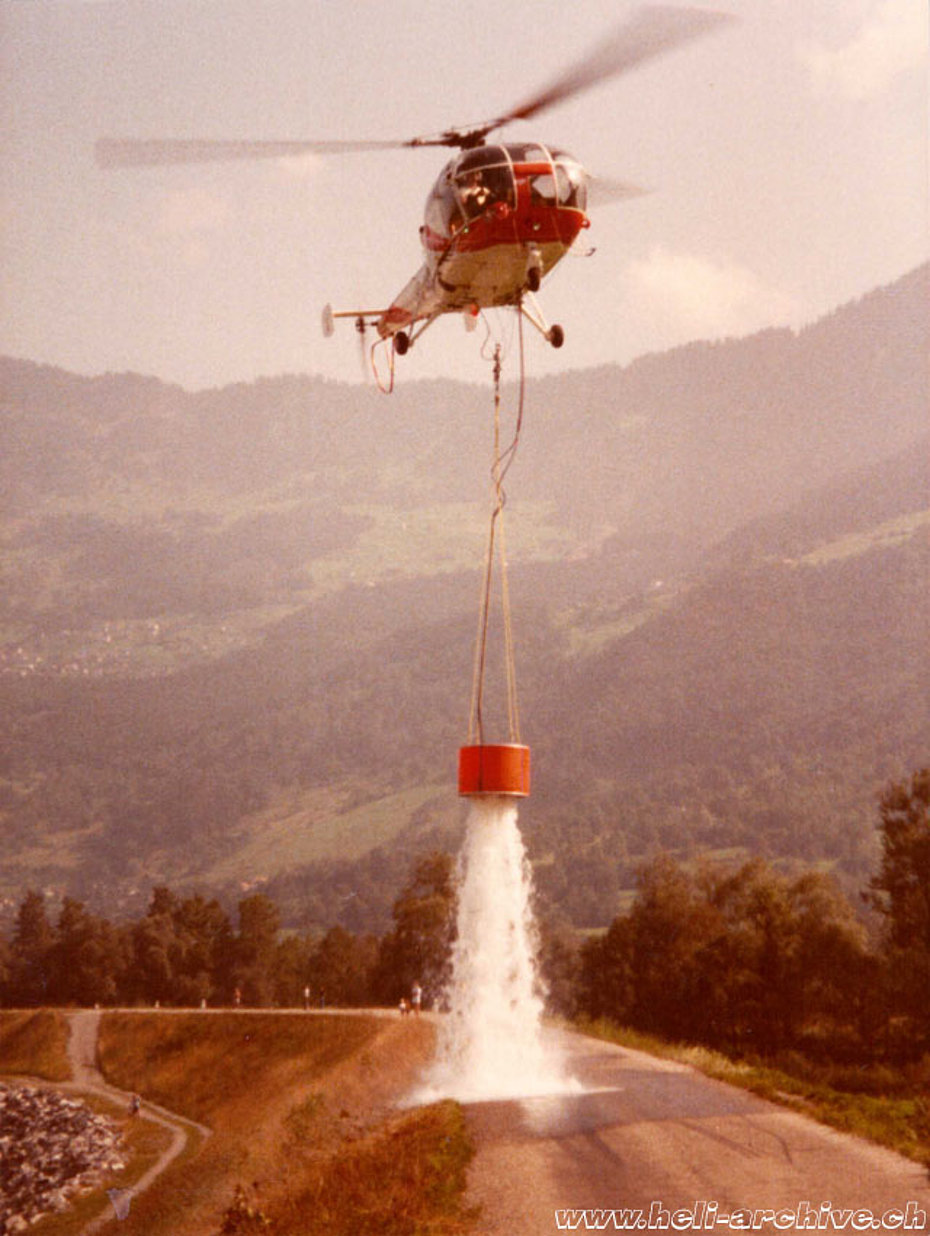
The famous L.O.M. blades
In the Spring of 1984, Rhein-Helikopter AG assumed the representation for the distribution in Europe, Africa and the Middle East of L.O.M. blades produced in the United States by L.O.M. Corporation of Traverse City (Michigan). These blades (often referred to in general terms as "American blades"), after replacing the complete original set, were individually replaceable and had a service life of 6,000 hours, twice as long as the original ones.
According to the manufacturer the transport capacities and performance of the SE 3160/316/315/319 series fitted with L.O.M. blades were equal if not better than the original ones.
In 1985 the "November-Zulu" was also completely overhauled and transformed into SA 316B.
In August of that year, a special 600 litres water bucket for fire-fighting operations was purchased. On August 30, 1985, the new water bucket developed by Heliswiss (destined to be almost soon replaced by the new bamby buckets) was publicly presented to the local press.
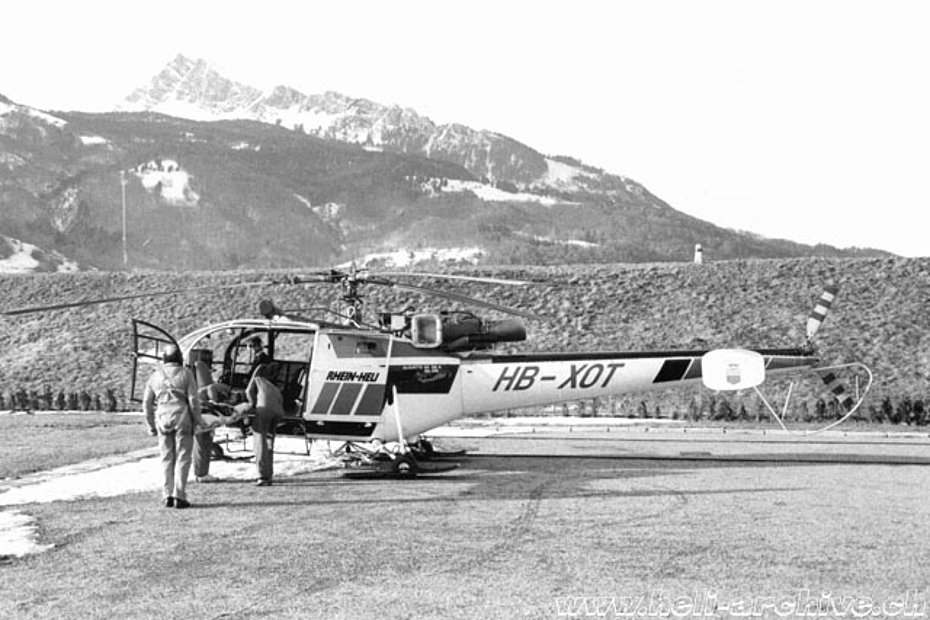
If necessary, HB-XOT, like HB-XNZ, could also be used as an air ambulance for the transport of injured or sick people. For SAR rules it could be equipped with a winch.
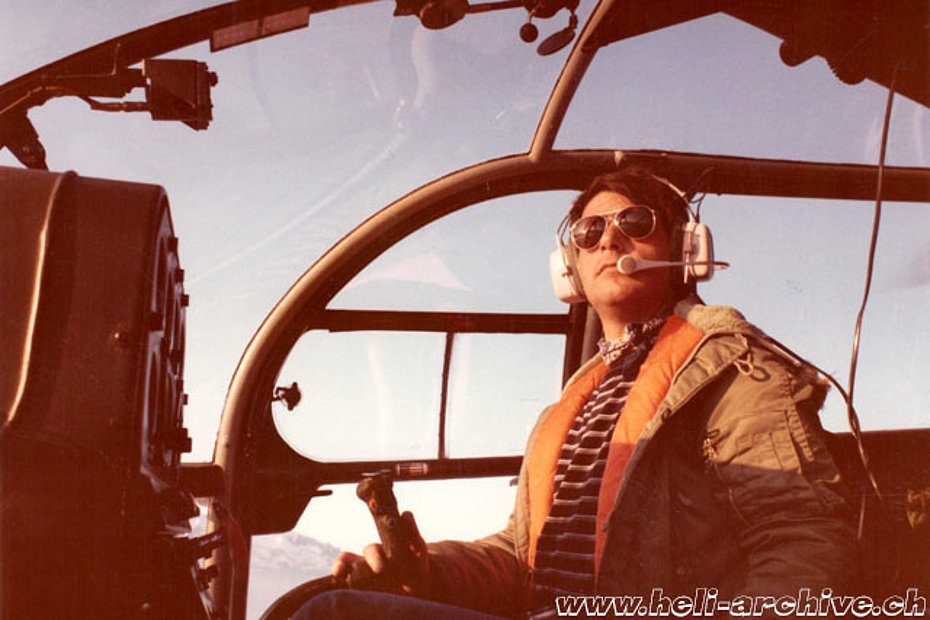
That same year, to meet the growing demand for transport, Rhein-Helikopter AG decided to purchase the first SA 315B Lama (HB-XPJ) which entered service in October 1985 after undergoing a complete overhaul. David obtained the type-rating on this model on October 14, 1985.
Although the use of helicopters in those years was growing strongly, the progressive expansion of the fleet of Rhein-Helikopter AG was "badly digested" by the other helicopter operators in the region.
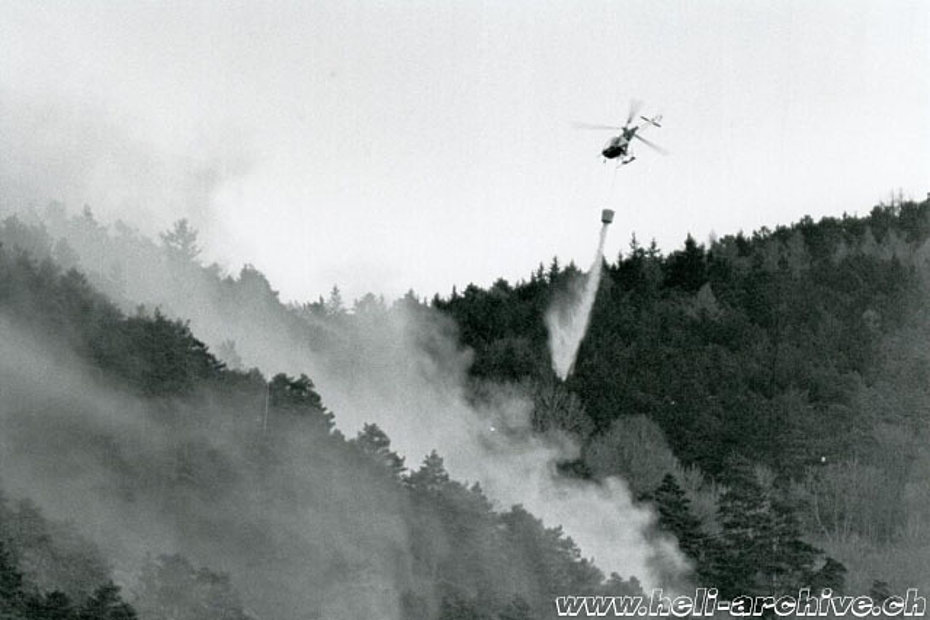
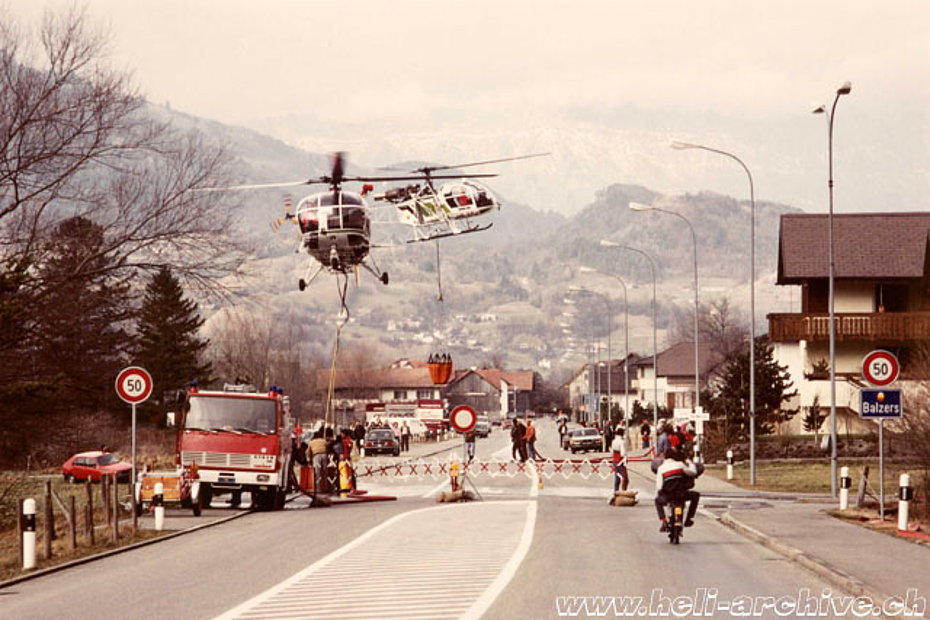
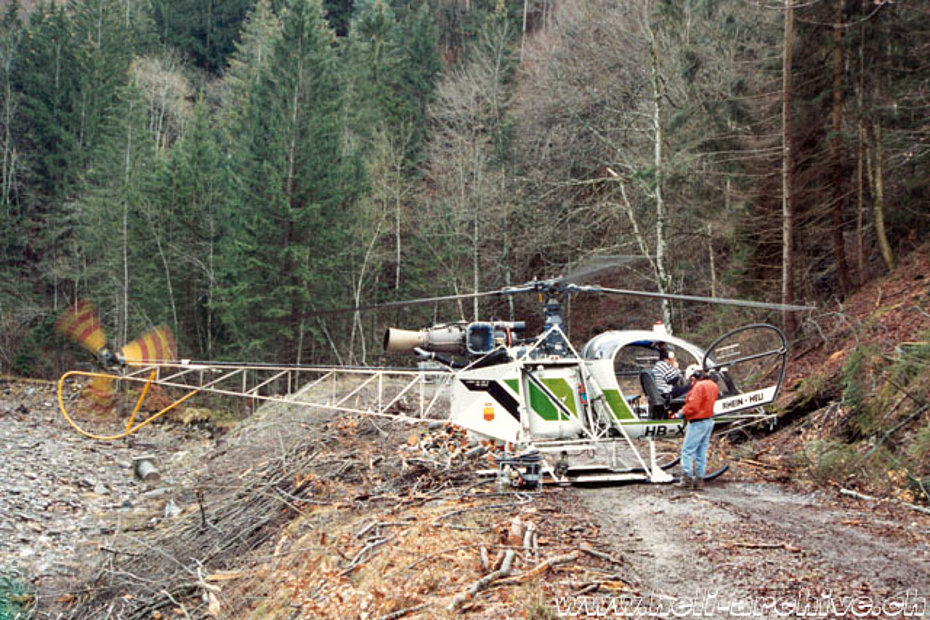
Heli-Linth's aircraft based in Mollis/GL, Air Grischa based in Untervaz/GR and Heliswiss aircraft based in Domat-Ems/GR had been operating for several years not far from Balzers. David Vogt never hid the fact that to win "a place in the sun" he was forced to work hard, said in other ways he had to "elbow".
The "Hero of Balzers"
On the afternoon of December 5, 1985, a fire broke out in the area above the village of Balzers when the Swiss army, despite the particularly dry and windy weather, imprudently decided to carry out a shooting exercise on the parade ground of St. Luzisteig. The latter is a pass that connects Balzers (Principality of Liechtenstein) to Maienfeld, the well-known Municipality of the Canton of Graubünden in Switzerland made famous throughout the world for being the country of Heidi. This is where the novel by Swiss writer Johanna Spyri was set, which inspired the famous Japanese cartoon version, as well as an incredible amount of film versions that in over 140 years have celebrated this beautiful alpine resort.
The pass is dedicated to Saint Lucius of Chur (Luzius von Chur). Legend has it that he was one of the first missionaries in the region of Rhaetia in Roman times.
David Vogt was transporting material to the Southern Rhine valley that afternoon. At about 16:00 he was alarmed by radio from the operations center of the outbreak of the fire and returning to the base he immediately realized the seriousness of the situation. At the controls of the SA 315B Lama HB-XPJ that had recently entered service, he immediately set to work to try to contain the flames as much as possible.
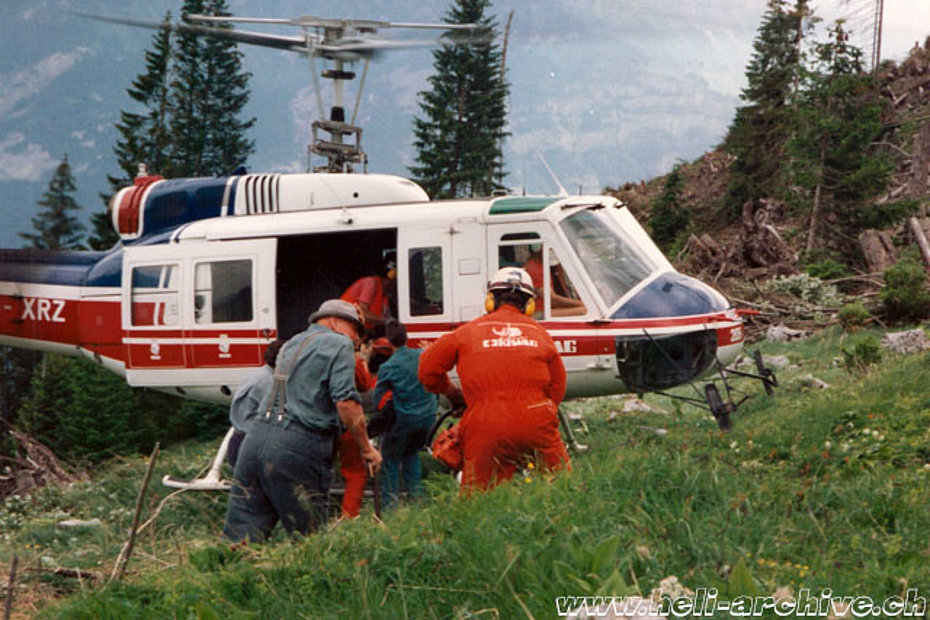
Fuelled by a very strong foehn winds, the fire spread quickly. In the late evening, some helicopters of Heliswiss and Air Grischa rushed from nearby bases. Given the strong wind and darkness, however, the pilots prudently decided to stop because of the risks (at the time, before a tragic accident that cost the life of a pilot in 1990, helicopters in Switzerland could, in special circumstances, be used to fight forest fires even at night).
During the night one man above all stood out for his self-denial, his courage and perhaps even a bit of recklessness: that man was David Vogt who made many launches to try to nip new fires in the bud and somehow to save what could be saved.
Great expert of the region and its morphology, defying the gusts of wind, which at times exceeded 100 km/h, the intrepid pilot (later indicated by the inhabitants and journalists with the nickname "der Held von Balzers" or the "Hero of Balzers”) went on without stopping until he too was forced to suspend the operations for a few hours now exhausted by fatigue. As he himself recounted, at times the force of the wind was such that the helicopter was violently tossed and could not climb along the side of the mountain.
During the night the fire advanced until it touched the edge of the village. The rescuers with extraordinary courage and spirit of sacrifice, eventually managed to stem the fire that in the meantime had consumed an area equal to 160 football fields.
The newspapers of the time report that a total of 1,200 people intervened to tame the flames!
The following day, the intensity of the wind decreased, the military and civilian pilots finally came to help.
A few days later David Vogt was informed by FOCA that during the fire-fighting operations, having exceeded the permissible maximum of 7 hours of flight per day (these were the regulations in force at the time), his license would be temporarily revoked. Those who knew him can easily imagine what his reaction was! Fortunately, the officials in Bern, understanding the gravity of the situation and having made the necessary considerations, retracted their steps and decided to cancel the measure.
Paradoxically, this event, which triggered a minor crisis in diplomatic relations between Switzerland and the Principality of Liechtenstein (the damage caused by the fire at the end of 1985 was estimated at CHF 5.8 million), had an unexpected positive outcome for Rhein-Helikopter AG. Everyone, or almost, at least, was finally convinced of the great usefulness of the helicopter and the need to have a heliport near the village.
For David Vogt it was a nice revenge that gave him renewed incentive to carry out new projects with greater serenity.
In those years the progressive increase in the demand for air transport had as a direct consequence the expansion of the fleet. In 1987 the heliport was enlarged for the first time also to make room for the new Bell 205 Super HB-XRZ owned by Kiwag Luftransporte AG, a newly founded company that counted Vogt among its shareholders. By his own admission, the Bell 205 Super was his helicopter of choice. It was mainly used for logging operations and for transporting loads up to about 1,750 kg.
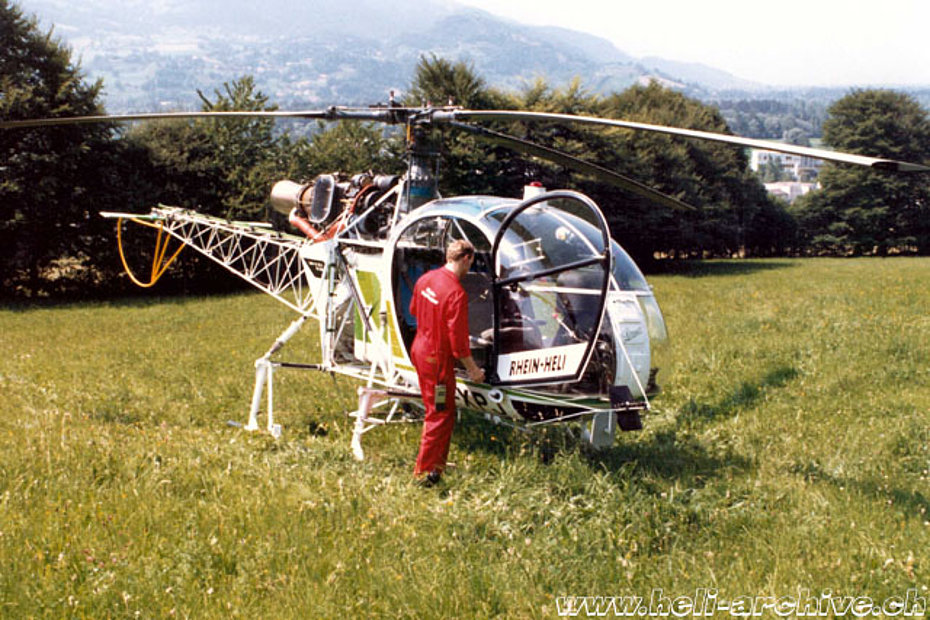
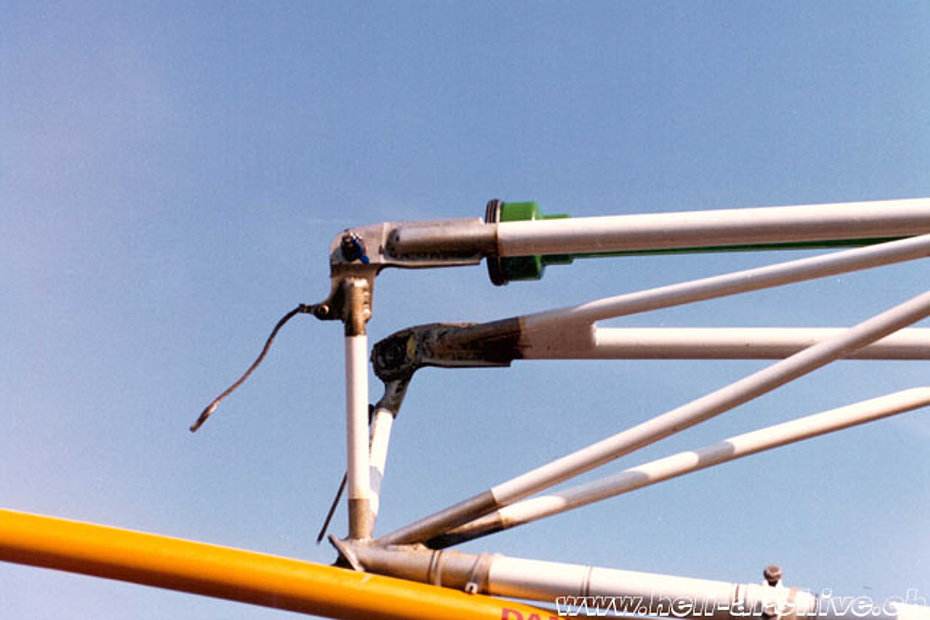
June 30, 1987 was undoubtedly a date printed in the memory of David Vogt. That day a customer asked him to supply his mountain hut on the Mittagspitz. Pilot and customer agreed that for the return a net containing somewhat bulky packaging would be hung from the 25-meter cable suspended under the helicopter. The first flight took place normally but then when the helicopter was descending David heard a loud noise followed by the total loss of control of the tail rotor. The helicopter began to turn around its vertical axis counterclockwise. Immediately understanding the situation, he reacted promptly by releasing the load. After losing 900 meters of altitude in a spiral, at 100 meters above the ground, he turned off the turbine and managed to make an autorotation landing. After getting out of the cabin the crew realized that the tail rotor was missing!
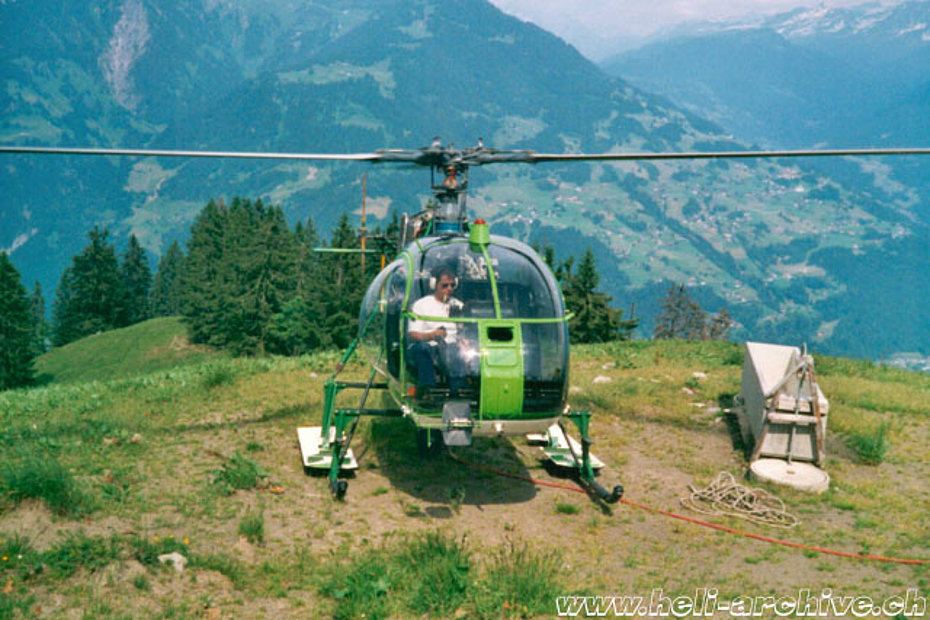
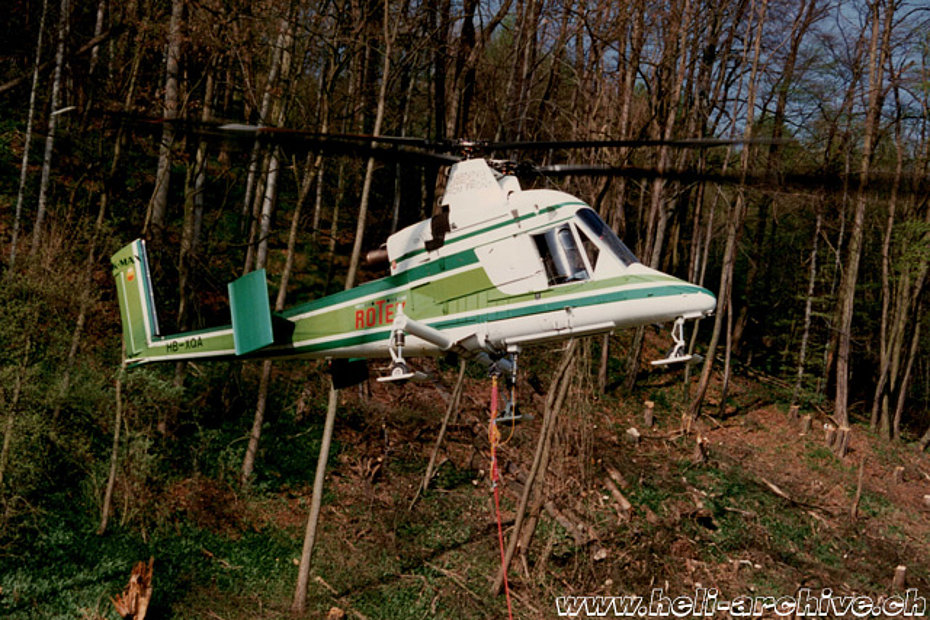
The accident was caused by the fact that during the descent flight a plastic sheet contained in the net suddenly inflated like a parachute. At this stage the cable to which the net was hooked severely damaged the tail rotor which then separated from the supports. Cold blood and skill allowed the pilot, who at the time had logged 2,200 flight hours under his belt, 800 of which on the SA 315B Lama, to come out of the misadventure unscathed.
During his career he had two other accidents that fortunately ended with only material damages.
Creation of Rotex Helicopter AG
The HB-XRZ was destroyed on September 23, 1993 at Stübleren-Flums/SG in an accident that unfortunately cost the life of pilot Luzius "Luzi" Stammbach.
The experience gained with the Bell 205 Super in logging operations convinced David Vogt to invest in a new helicopter with greater lifting capacity and more suited for logging.
On April 1, 1997 he participated in the creation of the new company Rotex Helicopter AG based in Balzers/FL, which purchased the new Kaman K-1200 K-Max HB-XQA helicopter.
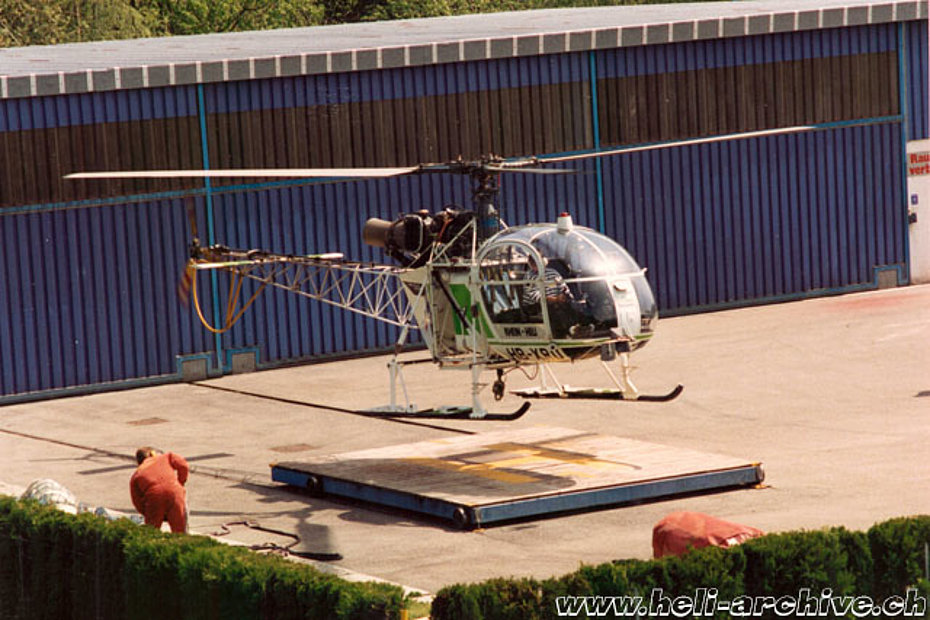
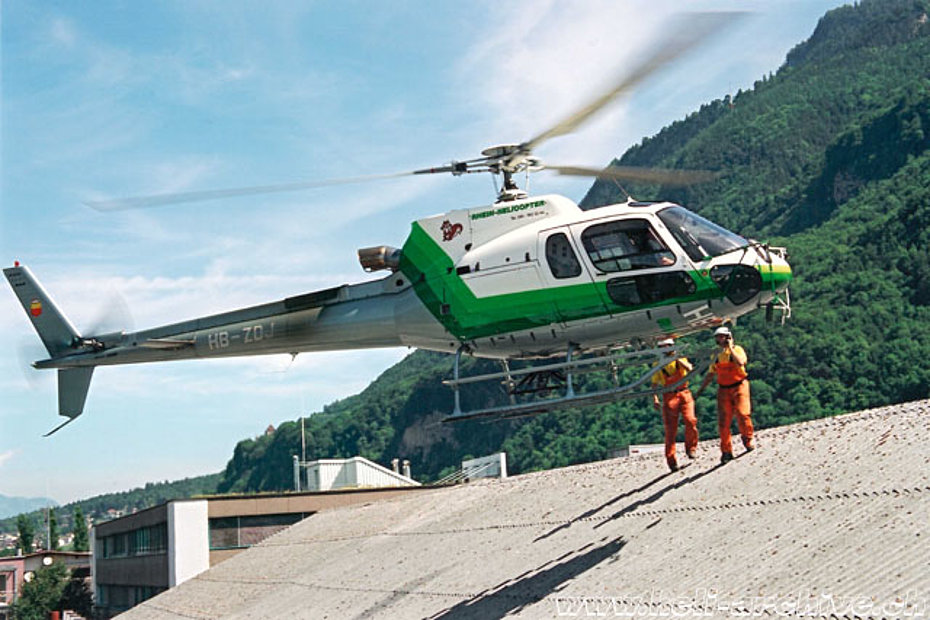
In this regard in January 1997 he went to the American manufacturer to follow the training course and thus obtain the relative type-rating. David Vogt had a flight experience of around 6,500 hours at the time.
To accommodate all the helicopters in the fleet in 1999 the hangars were again enlarged.
The business developed so that in 2007 Rotex Helicopter AG purchased a second K-Max (HB-ZIH). Nowasays it owns three K-Max (HB-ZGK, HB-ZPO HB-ZTW) and is the most important European operator to use this helicopter with intermeshing rotors.
In 2003, at the age of 55, David Vogt decided to reduce his flight activity to take more care of the management of his companies. Unfortunately in 2008 his wife Edith Schädler whom he had married very young in 1970 passed away.
Edith worked alongside him in the company for about ten years giving him an important support. They had three daughters: Nadia, Carmen and Sabrina. That tragic event threw David into a deep emotional abyss. Even his heliport no longer seemed to interest him. It took a few years before he recovered from his dear loss.
Merger with Swiss Helicopter
In 2011, after much thought, he took an important decision, namely to merge Rhein-Helikopter AG into the Swiss Helicopter Group. By that time he had logged around 8,000 flight hours.
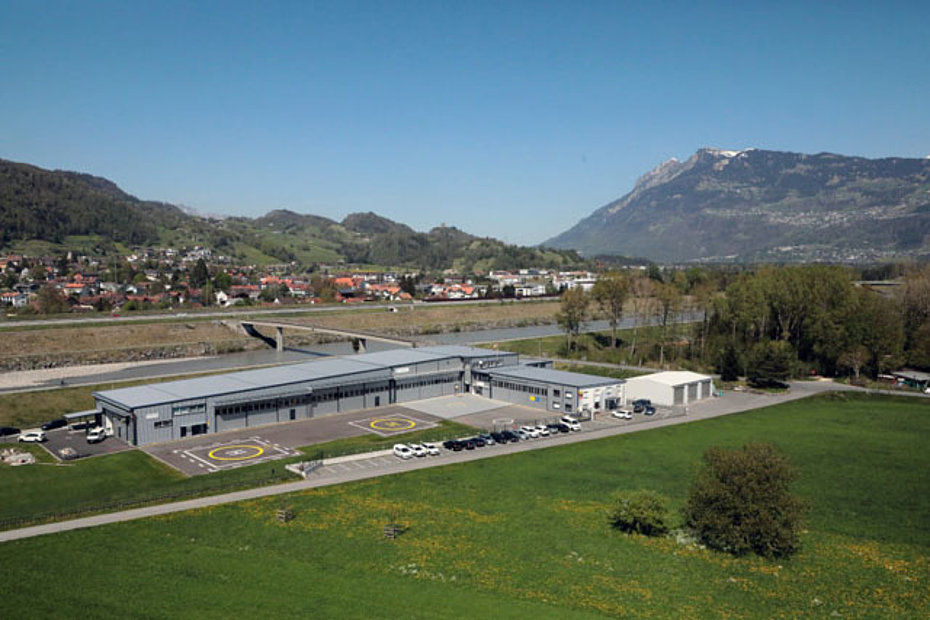
On July 1, 2012, he joined the board of directors of the new company, which included Eliticino, Air Grischa, Bohag, Heli Gotthard and Heliswiss.
After this reorientation, Swiss Helicopter became Switzerland's largest helicopter company. It is headquartered in Chur/GR and has a total fleet of around forty helicopters located in 15 bases throughout Switzerland. One of these bases is that of Balzers.
With a new entrepreneurial drive David Vogt further expanded the heliport (hangar 3) in 2017. The existing infrastructure has been modernized, while the remaining area of the Schefflände lot owned by the Municipality of Balzers (around 8,000 sqm) has since been acquired.
Nowadays the heliport offers dozens of qualified jobs and is an important spin-off for the economy of the region. The companies Rotex Helikopter AG, Valair AG, Swiss Helicopter AG, Swiss Helicopter Maintenance AG, AP Luftrettung, Helipool Gmbh, Heliswiss International AG are based here.
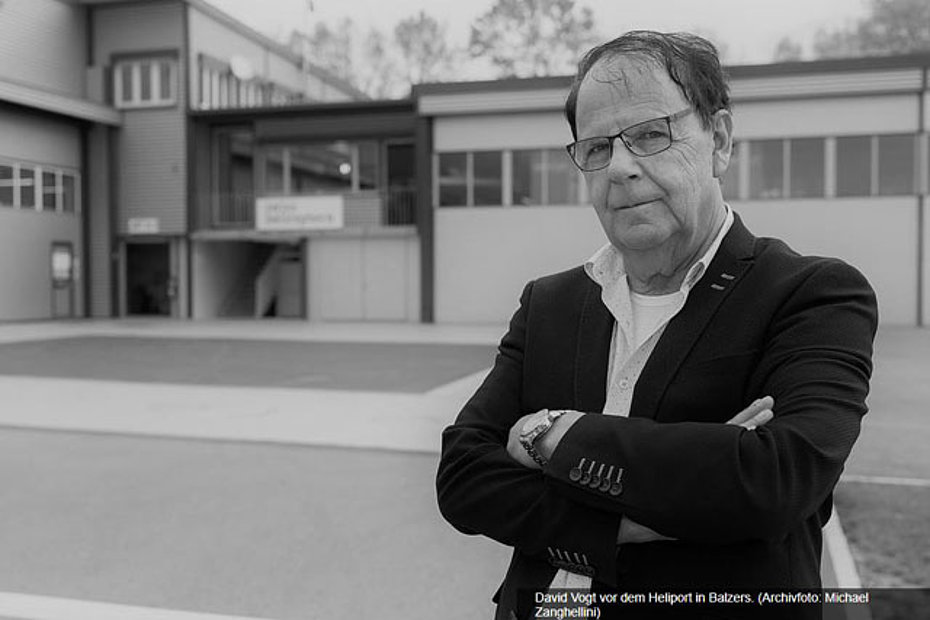
The base is mainly used for rescue flights (this was another of David Vogt's dreams), transport and training, and secondly for sports and leisure flights.
The property includes 730 square meters of space for maintenance activities and 1,200 square meters of hangar.
For over forty years, David Vogt has been passionately dedicated to the rotary-wing industry. Always attentive to every novelty, he has followed with keen interest the evolution in this sector. Nice and always courteous I gladly met him every time I went to the heliport. He always welcomed me with the inevitable cigarette and a smile, and I want to remember him as "der Held von Balzers".
On July 17, 2022, David Vogt made his last flight leaving a great void in his family and among those who knew him.
During his long career as a pilot he flew at the controls of the following helicopters: Hughes 300/500, Alouette 3, Bell 206 Jet Ranger, SA 315B Lama, Bell 205 Super, Exec 90, EC 120B Colibri, Kaman K-1200 K-Max and AS 350B2 and B3.
The heliport now belongs to EDAVO Stiftung, the family foundation.
Nowadays working at the heliport work are his daughter Sabrina and her husband Renzo (who everyone knows by the name of Aldo) as well as René Stierli, friend and business partner of David, to whom I thank for their kind contribution to write this article.
HAB 03/2023

